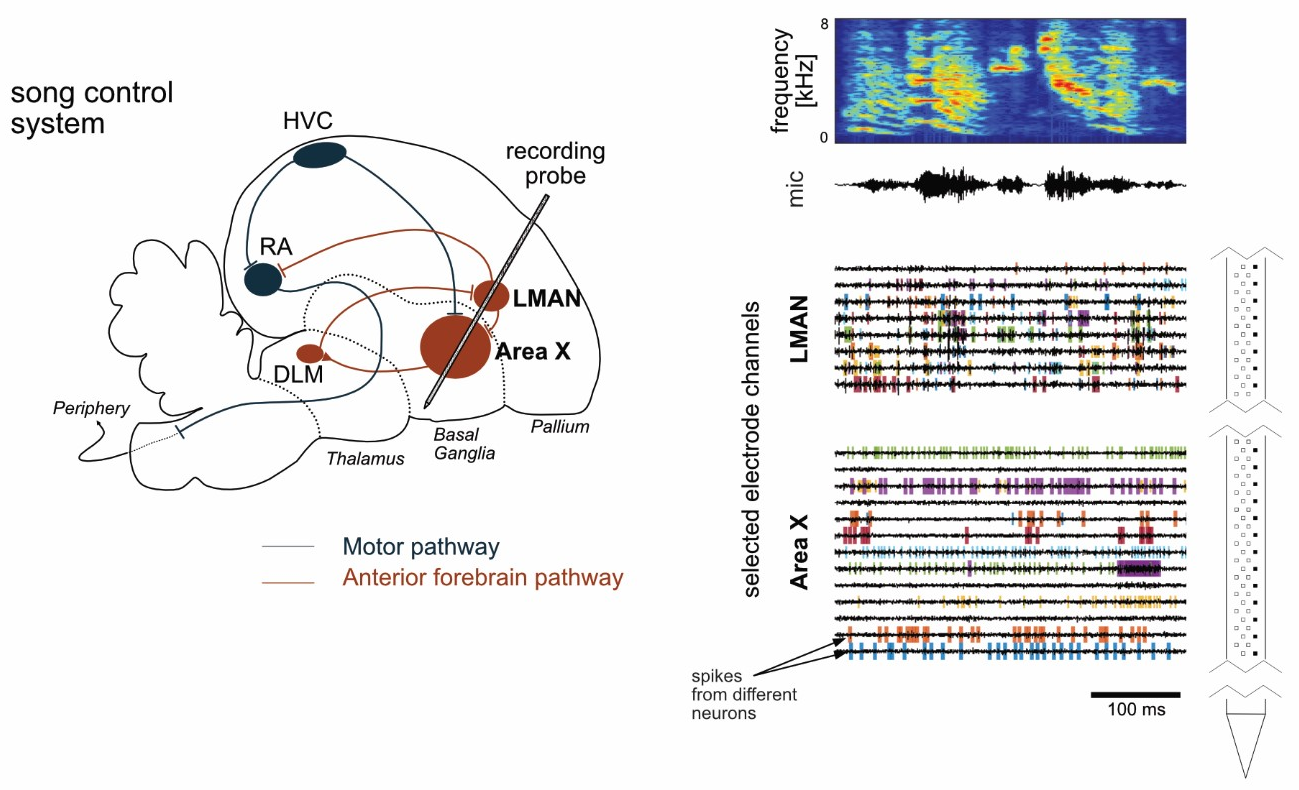Navigation auf uzh.ch
Navigation auf uzh.ch

Birdsong is a complex motor behaviour that is learned and controlled by a distinct network of interconnected brain nuclei. We are trying to understand the computations within and across these nuclei using large-scale recordings of neural activity performed with modern silicon probes (1), in collaboration with the group of Nicolas Giret at the Institute of Neuroscience Paris-Saclay. Our recordings provide access to a multitude of neurons and their dynamics. We are targeting both cortical areas such as the premotor region LMAN and basal-ganglia-like striatal areas including Area X.
Our goal is to build up on the existing literature that suggests LMAN and Area X to account for variability in the stereotyped vocal output as part of a mechanism that enables vocal learning and plasticity (2). Most of this previous work is based on lesion or stimulation studies in combination with behavioural manipulations. While causal inference allowed for conclusions about the general, functional role of these brain areas, there is still a lack of knowledge that links neural activity within and across these areas with vocal behaviour.
Singing birds in our experiments are subjected to various social conditioning and behavioural learning paradigms. During these learning dynamics, we seek to establish the correspondences between vocal behavior and neural signals. Furthermore, we explore the roles of diverse cell types in Area X in these tasks. Lastly, LMAN and Area X are part of a recurrent network called the anterior forebrain pathway. Until today, we have only little information about signals transmission along this pathway. Using simultaneous recordings in both LMAN and Area X, we want to gain new insights into corticostriatal communication.
If you are interested in this project for an MSc Thesis or Semester Project, please get in touch with Corinna Lorenz